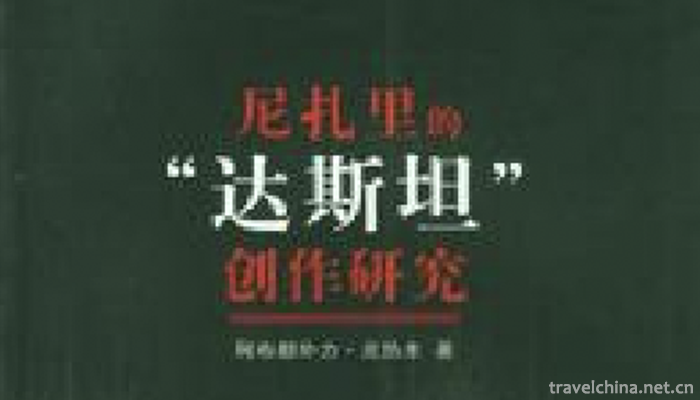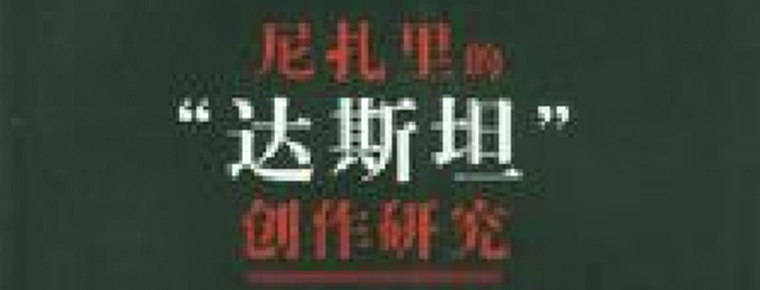Uygur Dastan
Uygur Dastan
Uygur Dastan is a kind of Uygur singing and playing music. It is a kind of long narrative poem with rap and singing. It is a long poem with complete stories and characters. It is a folk art form with a long history. Music is narrative and lyric. From the 3rd to 7th centuries AD, a Uygur folk book called Alifu was circulated. Dastan's work of El Tu'er sings El Tu'er, the people's hero. Its music is deep and euphemistic, with ups and downs in tune, paying equal attention to narration and lyricism, and playing accompaniment of Boer, Dutal and Gervalf with musical instruments, which is well received by the masses. As early as the 1940s, it was moved to the stage. It has been playing for a long time because of its moving plot and beautiful music. .
On June 7, 2008, "Uygur Dastan" declared by Xinjiang Uygur Autonomous Region was listed in the second batch of national intangible cultural heritage list with the approval of the State Council.
historical origin
"Dastan" is a form of folk art with a long history in Xinjiang Uygur. "Dastan" is Uygur, meaning "narrative poem". Dastan, as a kind of music, is characterized by rap and singing long rhyme stories. Narrative Long Poetry has become a form of rap and singing performance because Uygur people borrow the tune selection from the large-scale music suite of their own nation and the ancient Mukam to sing and perform.
Legend has it that as early as the 3rd to 7th centuries A. D., Uygurs living in Xinjiang, China, had a Dastan program called "Ali Fu El Duer'a", which showed the heroic deeds of the national hero El Duer'a. From then on, the performance of heroes became a tradition of Dastan's rap and singing.
artistic characteristics
Manifestation
In Dastan's performance, one or three performers perform, in which the main actor plays by himself with the national musical instruments, such as Jewafu or Dutal, Puntar, Shatar, etc. Other actors sang in festivals such as drums or stones. The venues for the performances are also flexible. They can be performed in fairs, teahouses and banquets. It is said that the famous heroic epic of the Kirgiz people in Xinjiang, "Manas", was also performed and circulated in the form of Dastan. According to legend, Sjti is the most famous artist who plays and sings in Dastan. His deeds were compiled into a Dastan performance called "Hans Etti".
primary coverage
Uygur Dastan reflects a wide range of content, including historical events, heroes, love stories, etc. It reflects the history and real life of working people, but also reflects the national folk culture, aesthetic value and philosophy. According to the content and form of Uygur Dastan, it is divided into hero Dastan, love Dastan, historical Dastan and Jiangnamai (religious Dastan).
Uygur hero Dastan, whose length is long and involves a wide range of life, takes major historical events and heroic legends as the theme, and reflects the Uygur myths and legends in the form of poetry, as well as the war between tribes and nationalities and the great achievements of heroes. Such as: The Biography of Ugus, Chintomur Baur, The Son of the Tomb (gor oghli), Yusuf Ahmaiti, Alip Altunga, Rutem dastani, etc. Take "The Biography of Ugus" as an example: The Biography of Ugus is divided into two parts. The first part describes the birth, growth and sweating experience of Ugus. The second part describes the war stories of Uguskan, including the creation myth, national origin legend, folk beliefs, customs and habits of ancient Uighurs.
The content of Uygur love Dastan includes fantasy love plot and life love plot. Fantasy love Dastan takes the hero falling in love with beautiful fairies as the beginning of the story, struggling with demons and monsters, taking painstaking efforts to get the fairy's love as the content, full of rich fantasy color. For example, kemershah we shemsijanan, horlika-hamrajan and senuber. Dastan's real love life as a clue mainly reflects young people's yearning for and pursuit of free love, and exposes the tragedy brought about by social interference in young people's love and marriage at that time. For example, "Aliv and Sai Nam", "Tahir-Zuhora", "Palhard-Siren", "Laili-McGinnon", "Rebiya and Saidin", "Kizilgulum", "Kakkuk and Zayep" are the representative works of Uygur life love Dastan.
The historical Dastan of Uygur takes the important events and the activities of historical figures as the theme, mainly describes the dedication of historical figures for the benefit of the people. His representative works include Nozigum, Stinoch, Abdul Rehmann and Zhuo, etc.
The main theme of Jengname is the religious wars that took place during the period of Islam's introduction into Xinjiang. It describes the war scenes between Uighurs who accepted Islam and Uighurs who refused to accept Islam and Uighurs who believed in Buddhism in Hotan, and the heroic achievements of some of the leaders who emerged in the war. This kind of Dastan retains the expressive techniques of Turkic-speaking national heroic epics.
Current situation of inheritance
According to the first National Report on the Protection and Development of China's Intangible Cultural Heritage (2011) issued by the China Research Center for intangible cultural heritage in Beijing, there are embarrassments in the protection of Chinese folk literature, such as the aging of representative inheritors, the lack of identification criteria for directories at all levels, the difficulty of joint declaration and the difficulty of intellectual property protection. The average age of inheritance of "non-legacy" is over 70 years old.
Especially, the two major problems are the aging of inheritors and the lack of identification criteria for directories at all levels. At present, the oldest representative successor of the national intangible cultural heritage project is Shah Maimaiti of the Uygur Dastan project, who is 101 years old.
Inheritance and Protection
Uygur Dastan has been handed down from generation to generation in the form of folk narrative performers (Dastan Chimeddah), so Dastan Chi plays an important role in the creation, circulation and preservation of Uygur Dastan. Dastanchi is a folk artist with certain artistic talent. First of all, they have a strong ability of language expression. They earnestly study the stories of various subjects spread among the people, and have a concise, vivid and refined folk language. They can narrate their works profoundly and vividly. Secondly, most of Dastanch is good at music. The prose part of Uygur Dastan is narrated in oral language, while the rhyme part is narrated in the form of songs. So as Dastan, he should not only memorize Dastan's text, but also master Dastan's melody. It can be said that Dastanch is also a folk musician. They are skilled in folk music and play different instruments. Thirdly, Dastan is as good at performing arts as a theatre actor. Their performances vary according to the gender, age, social status, occupation and personality of the characters in Dastan. Their facial expressions and gestures change accordingly, describing the content of Dastan vividly and vividly with different rhymes and tones.
National festivals, Bazaar (market), Mazaar tours, and workplaces are the big stage for Dastanchi to show their talents and wisdom. These places are the main places for farmers to socialize and have a large number of people. Dastanchi's excellent performances in these places deeply attract the audience. Dastan has been disseminated, preserved and developed under such a cultural background.
Inheritance Significance
Uygur Dastan has a wide range of contents and diverse subjects. Although a certain number of Dastan have been collected, the collection is still incomplete, and the research on its rap and singing performance art is also scarce. The performance content, skills and characteristics of Dastan (folk narrative performers) are the living form of Uygur Dastan and the charm of Uygur Dastan. Therefore, the protection, inheritance and development of Uygur Dastan's text, especially its performing arts, is particularly important.


-
1.Leifeng Memorial Hall in Fushun
The Leifeng Memorial Hall in Fushun City is located at No. 61, East Section of Peace Road, Wanghua District, Fushun City, Liaoning Province. It covers an area of 99900 square meters, near the army sta
Time 2019-01-12 -
2.Museum of Xinjiang Uygur Autonomous Region
The Museum of Xinjiang Uygur Autonomous Region, located at No. 132 Northwest Road, Urumqi City, is a provincial comprehensive geographic museum.
Time 2019-02-25 -
3.Yinghu Scenic Area
Yinghu, a national AAAA-level tourist area, is located 16 kilometers southwest of Ankang City, Shaanxi Province. The total area is 102.8 square kilometers, including 77 square kilometers
Time 2019-03-05 -
4.Two strands
Erguxian is an ancient traditional opera, which was formed in Song Dynasty and has a history of more than 500 years. The two-strand string is evolved from folk minor,
Time 2019-04-28 -
5.The 70th Anniversary of the Founding of New China
On January 11, 2019, the Third Plenary Session of the 19th Central Discipline Inspection Committee of the Communist Party of China opened in Beijing. Xi Jinping, General Secretary of the CPC Central
Time 2019-05-04 -
6.Furniture Making Skills
Ming-style furniture making skills, local traditional handicraft in Suzhou City, Jiangsu Province, one of the national intangible cultural heritage.
Time 2019-05-05 -
7.Tune in the sea
Linhai Ci Tune, also known as Taizhou Ci Tune, Talent Ci Tune and Xianhe Tune, is developed from Nanci, Kunqu and Taizhou local folk minor. It is one of the folk songs of Taizhou, Zhejiang Province. I
Time 2019-05-13 -
8.Naxi Remei Biao
"Remei Biao" is also known as "Wo Yo Ye", which is a collective folk custom that has been spreading for thousands of years. There are more than ten people at least and hundreds of
Time 2019-06-07 -
9.Bangkok in Puzhou
Bangzi of Puzhou is named for its origin in ancient Puzhou. Jinzhong and Northern Shanxi are called "Bangzi on the South Road" or "Bangzi Opera on the South Road", Shangdang is cal
Time 2019-06-09 -
10.Talking in North Shaanxi
North Shaanxi storytelling is mainly popular in Yan'an and Yulin in the north of Shaanxi Province. At first, poor and blind people sing some legendary stories in the folk song minor of northern Shaanx
Time 2019-06-13 -
11.Xinhua Folk Song
Xinhua Folk Song is a kind of traditional folk song mainly spread in Xinhua County, Loudi City, Hunan Province. Xinhua folk song has a wide range of contents, old style, unique style, simple rhyme, ch
Time 2019-07-06 -
12.Bozhou University
Bozhou College (Bozhou University), for short, is located in Bo Yuan. Anhui Province Bozhou City By the state Ministry of Education Approved full-time full-time undergraduate institutions.
Time 2019-11-08